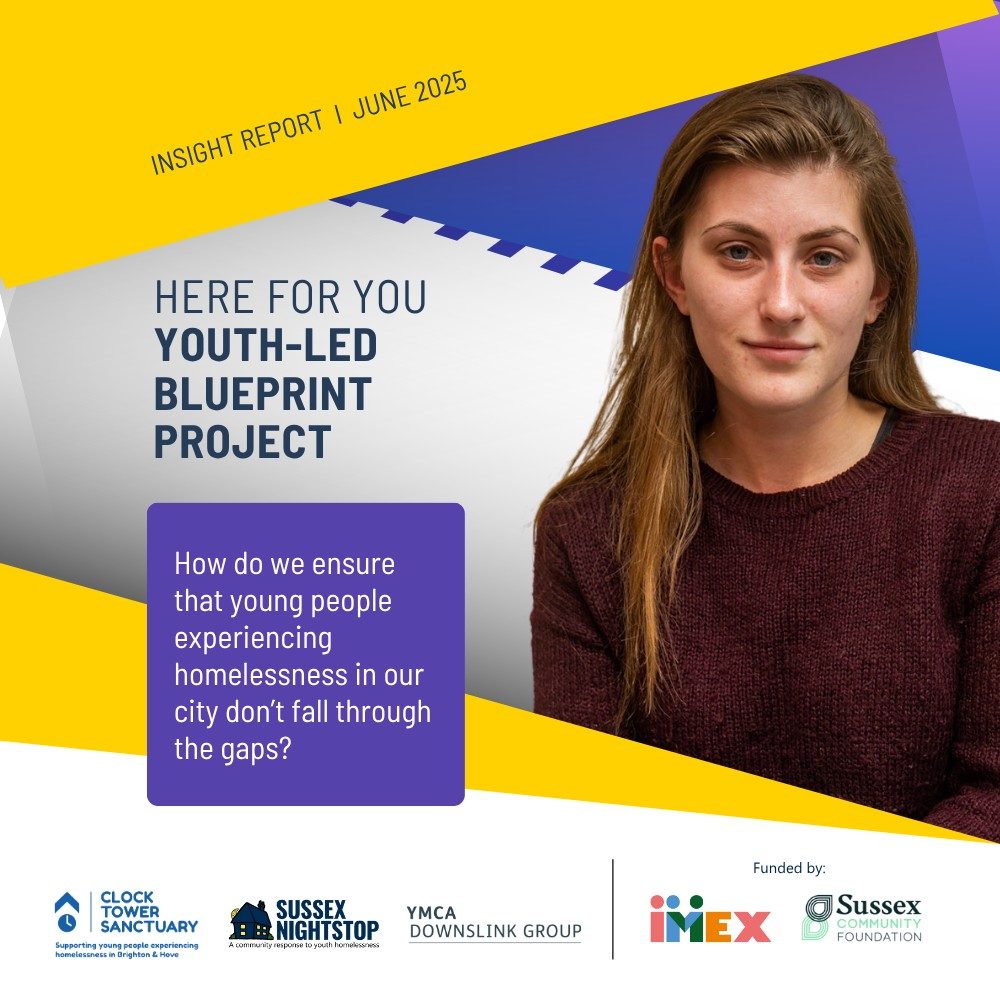Currently, there is no national plan for the growing problem of youth homelessness. Locally in Brighton & Hove a homelessness strategy is in development and we want to ensure that young people are not overlooked.
According to Centrepoint, the South-East has witnessed a 13% increase in young people approaching their local council for help. At the same time, over the last four years, the proportion of assessments in England has fallen by 14%.
Here’s the rub
The latest Centrepoint report for the year ending March 2024 states that 101,460 young people asked their council for help and 67% of them were assessed. But we also know that youth homelessness is much bigger than that. 255,000 according to research [Clarke et al, 2015]. That’s a massive data gap.
So what happens to all the young people experiencing homelessness who don’t ask for help? Where do they go and what do they need?
We conducted an insight project from January to June 2025 with our partners the Clock Tower Sanctuary and YMCA Downslink Group [who operate the Youth Advice Centre in Brighton] – thanks to funding from IMEX and Sussex Community Foundation. We wanted to understand these figures nationally – and locally – and we needed to speak with young people with lived experiencing of homelessness, to understand how they seek help and what they need from local services.
This insight project was comprised of:
- Desk research – drawing insight from 22 national and local research reports.
- An online survey completed by 36 young people aged 16-28 with lived experience of homelessness.
- Qualitative discussions with 34 young people who had completed the survey.
- Interviews and surveys with professionals from local youth and homelessness services.
Top three headlines from our insight
1. We estimate that only 40% of young people experiencing homelessness are seeking help from their local council in England. This means that the majority (60%) are under served. This is without doubt linked to a constrained financial context that suppresses service availability and a charity sector that [quite rightly] focuses available funds on service provision over promotional activities to improve awareness.
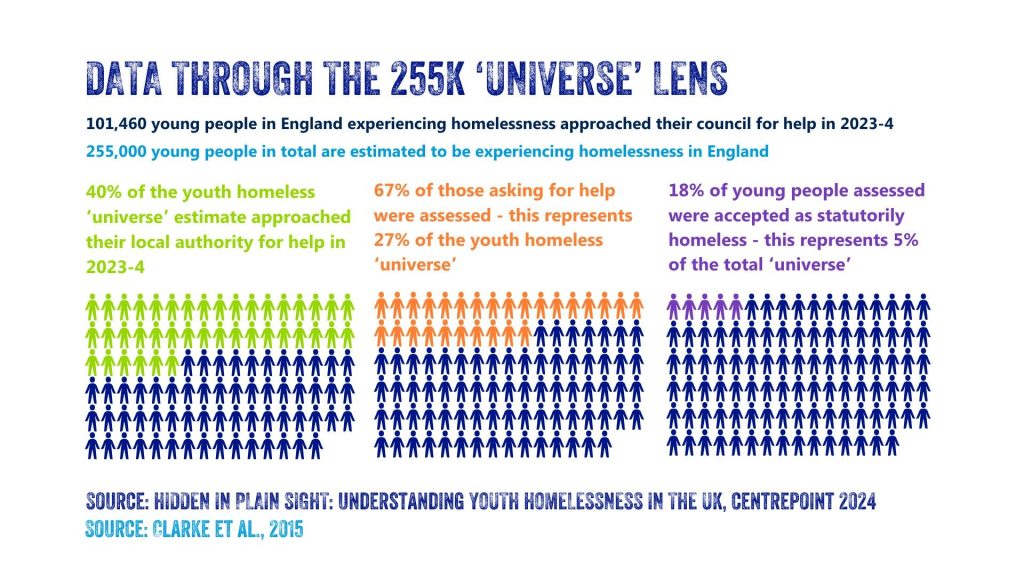
2. National and local data is patchy, with marginalised groups ‘invisible’ – which prevents learning and improvement. National insight reports low levels of trust in services, arising from negative service experiences; concerns over confidentiality; discrimination; lack of cultural awareness and a ‘combative, scary response’ from local authorities.
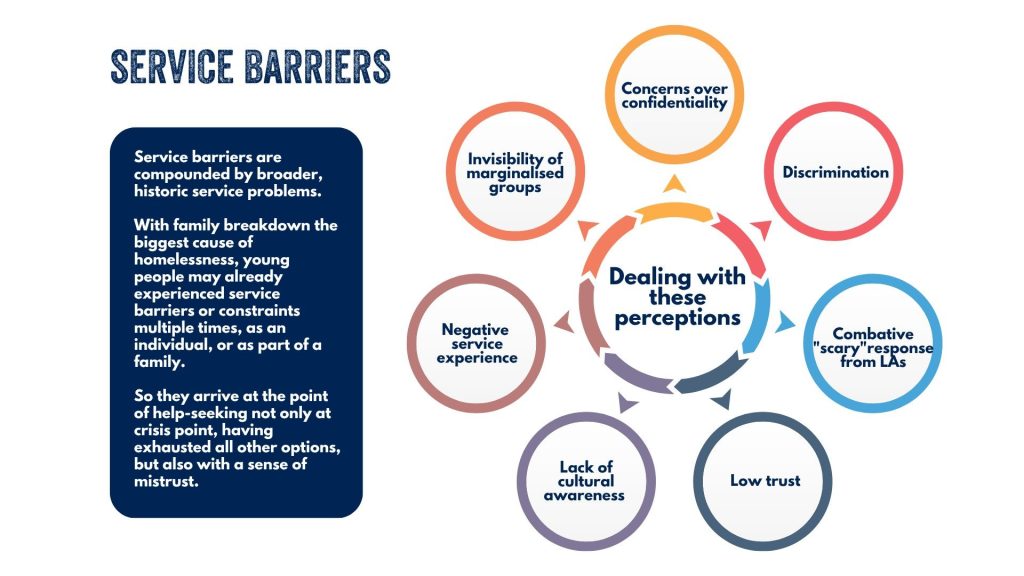
National insight also points to barriers to access including:
- Low awareness of rights and services
- Low confidence and fear of consequences
- Fear of discrimination
- Stigma
- Digital exclusion – including access to confidential spaces
- Language and communication
- Physical – cost, danger, isolation, disability
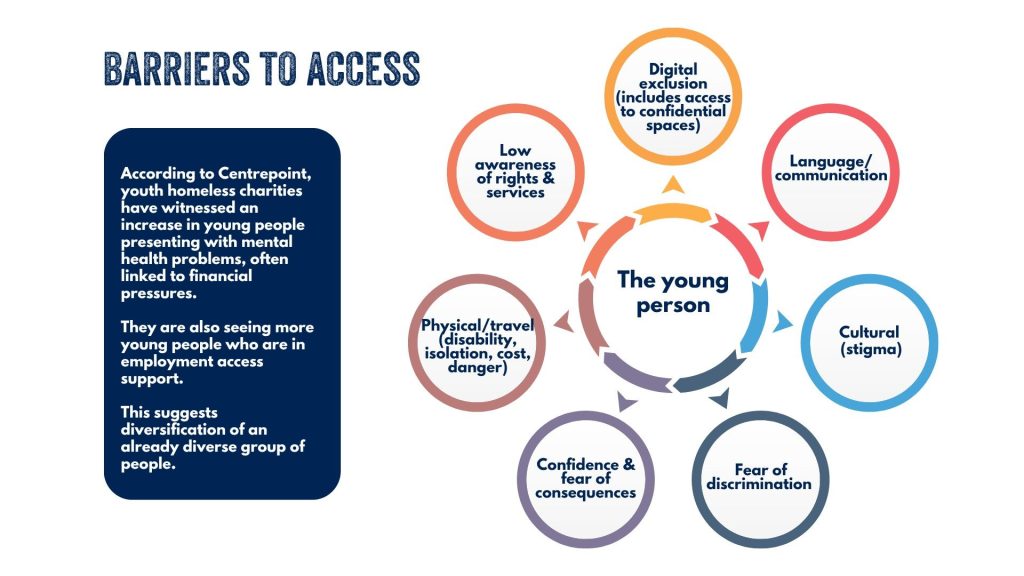
3. Locally, awareness of youth-specific homelessness services is better than the national figures, but on average, 44% of young people are unaware of service offers. Thankfully, when young people do find local support from its three youth-specific charities [Sussex Nightstop, the Clock Tower Sanctuary and the Youth Advice Centre], 91% of them would recommend these services.
However, whilst the council is recognised as the first place to go, perceptions of the housing advice service for young people are significantly lower than that of local youth homeless charities.
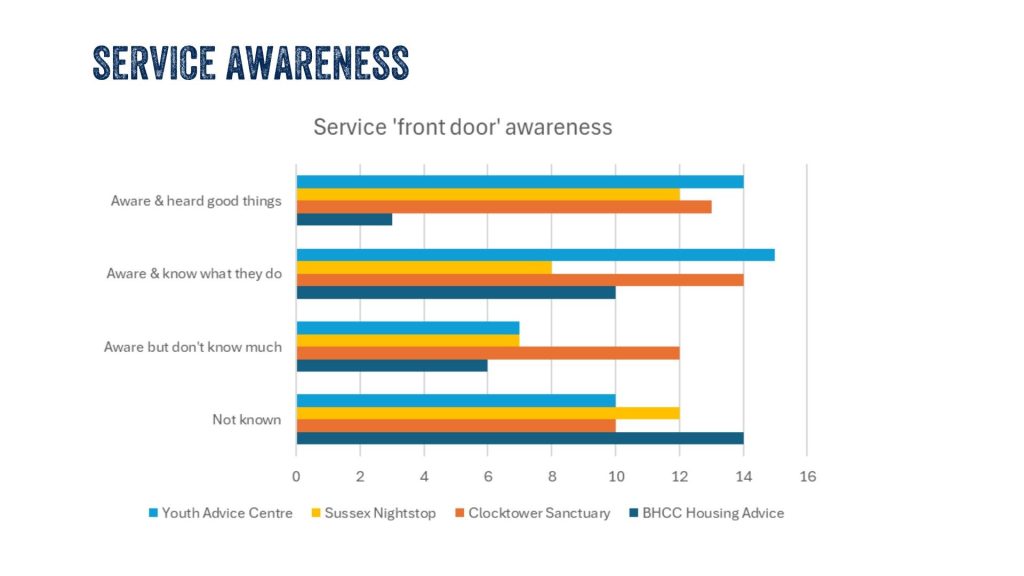
So, what do we need to do?
Our insight points to three areas for action:
STRATEGY
- Recognise the specific needs of young people within the emerging Brighton & Hove Homelessness and Rough-Sleeping Strategy through a youth-specific homelessness chapter. This could include a cross-themed commissioning group that recognises the compelling economic and social value outcomes of prevention and early intervention within youth homelessness work.
- Design and capacity-build the frontline response to youth homelessness and develop the case for resourcing a coherent and consistent ‘front door’ support offer with kindness, advocacy and navigation at its heart.
COMMUNICATION
- Design, deliver and consistently invest in a citywide communications initiative that puts inclusivity, clarity of service offer and an encouraging and supportive approach for young people at the fore.
- Meet young people where they are through citywide collaboration and learning to improve understanding among frontline professionals and build a high-quality, collaborative and trauma-informed youth homelessness approach.
INSIGHT and IMPACT
- Maximise the engagement of young people in the ongoing co-production of services through joined up and representative youth voice initiatives.
- Implement a local data strategy for consistent measurement and improved understanding of youth homelessness.
Read the report
Download the insight report – HERE FOR YOU INSIGHT REPORT June 2025
What next?
Sussex Nightstop, Clock Tower Sanctuary and YMCA Downslink Group brought together professionals who had contributed to the insight, to present our findings and discuss the recommendations. We now need to get to work implementing them. We’ll post updates on this blog and via LinkedIn.
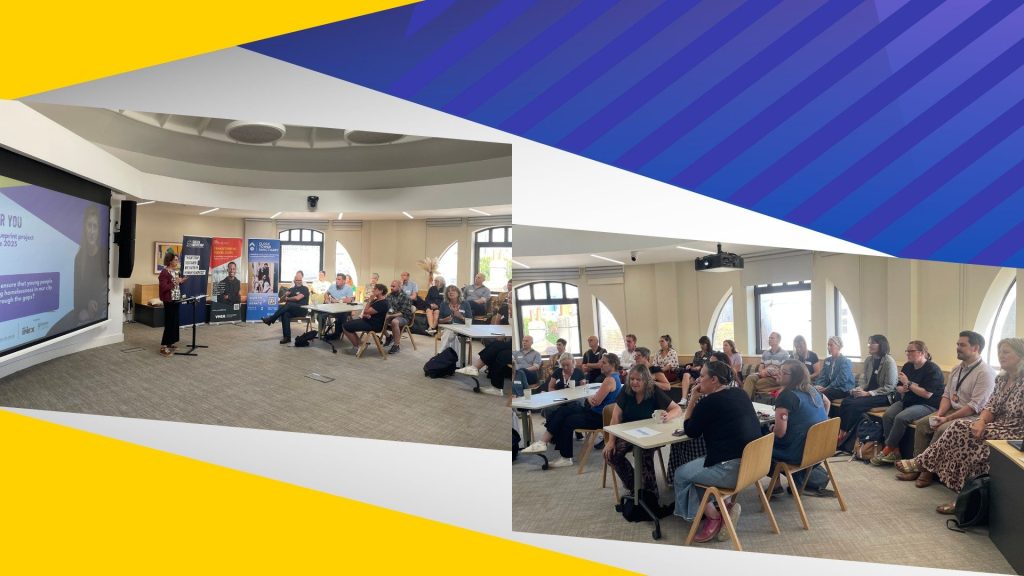
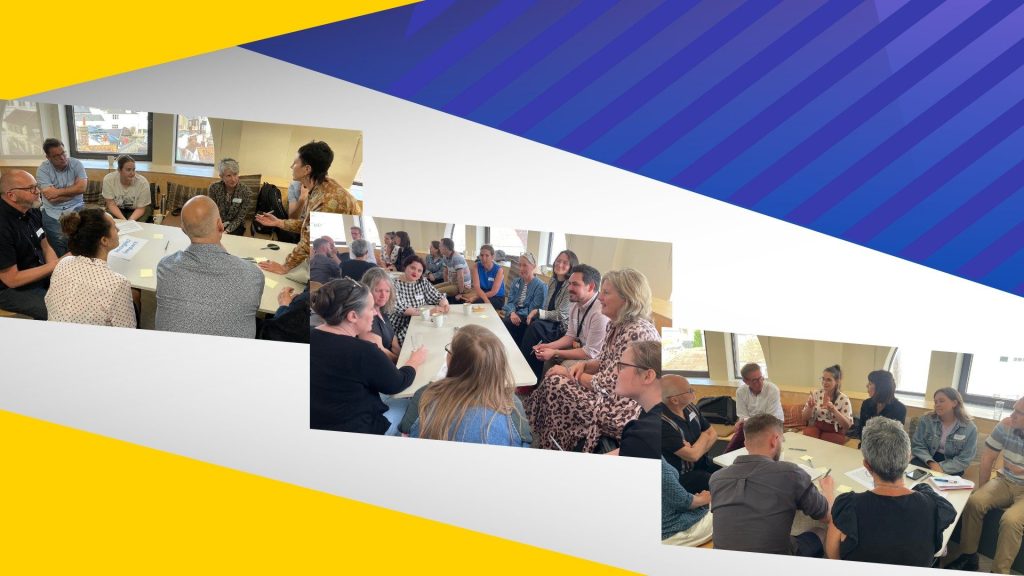
We also continue to support the #YouthHomelessChapter campaign, initiated by New Horizon Youth Centre in London and now being led by Centrepoint, which is supported by over 100 youth homeless charities nationally. This campaign offers political parties a clear, robust and informed strategy to better meet the needs of young people.
What can you do to help?
You can write to your MP on behalf of your organisation, or as an individual. The campaign has a template you can use.
To get involved in our work to improve services in Brighton & Hove for young people experiencing homelessness, contact project lead [email protected]
